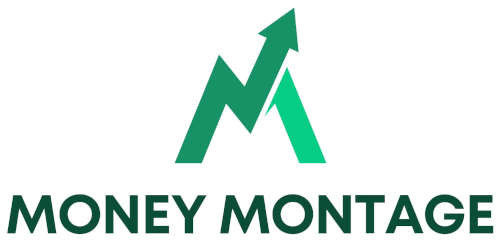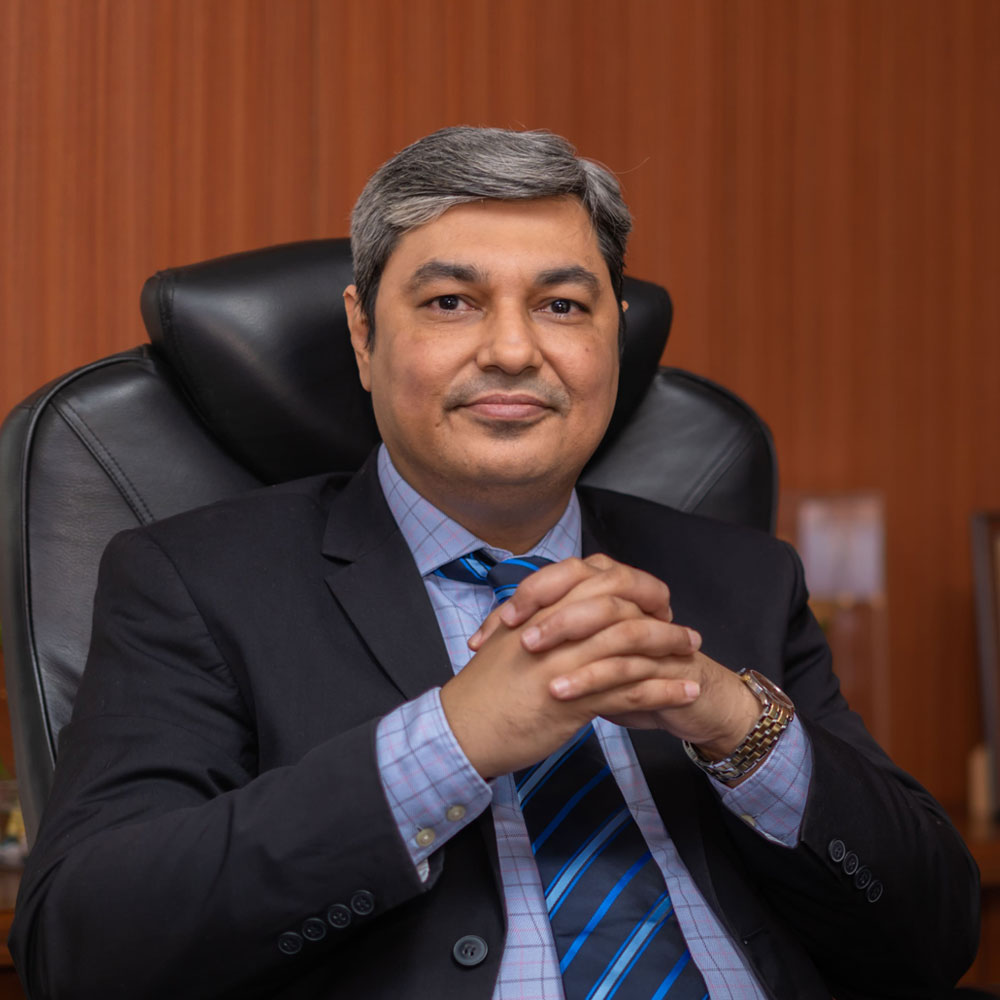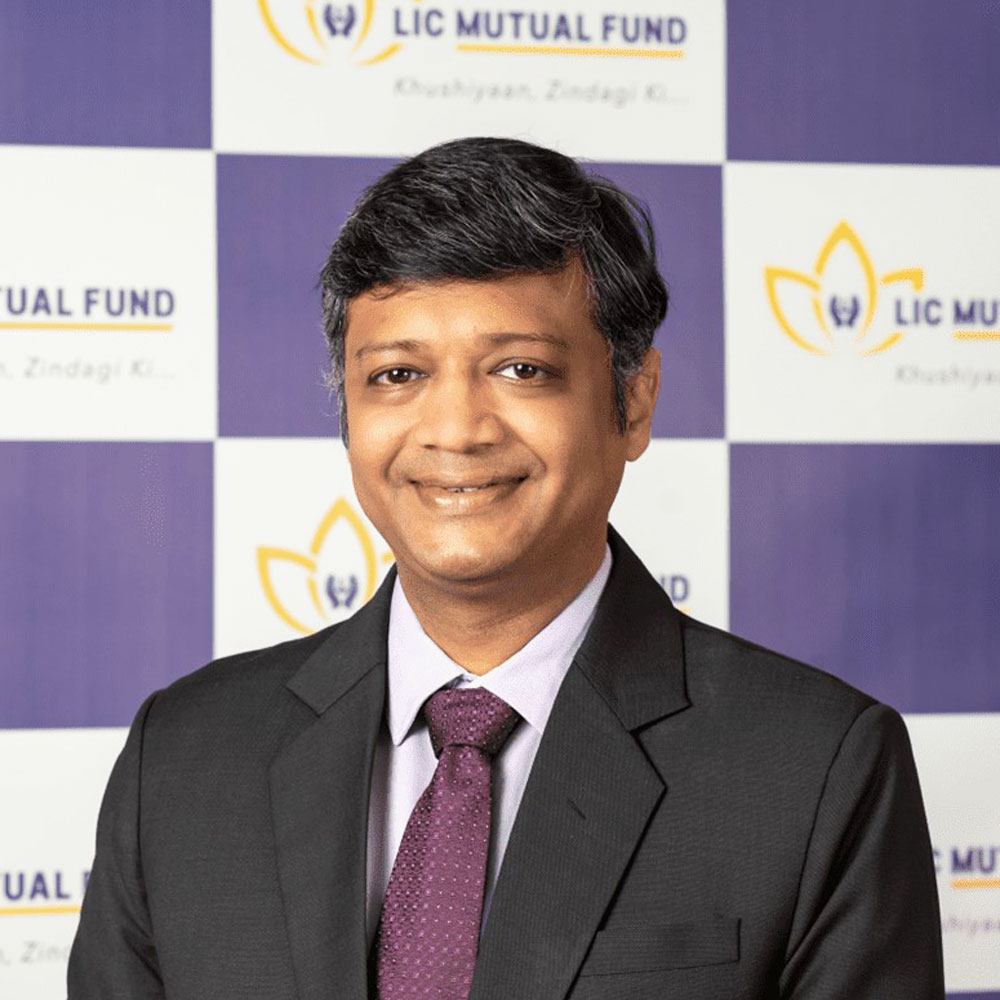Mr. Nikhil Rungta
Chief Investment Officer - Equity, LIC Mutual Fund
Mr. Nikhil Rungta is a seasoned investment professional with extensive experience in managing diverse investment portfolios. He has a track record of developing and implementing successful investment strategies and also has demonstrated ability to conduct comprehensive market analysis and identify investment opportunities. Mr. Rungta is a Rank holder Chartered Accountant, MBA (Finance)-NMIMS, FRM (GARP) and also has Sustainable Investing Certificate issued by CFA Institute.
Experience:
Co - CIO- Equity, LIC Mutual Fund Asset Management Ltd. (w.e.f. 19th June 2024)
Fund Manager (Equity)-SBI Pension Funds Private Limited (w.e.f. 29th April 2024 31st May 2024)
CIO- Equity, Golden Myriad (Garware Group Family Office) (21st November 2023- 4th April 2024)
Co-Fund Manager and Research Analyst - Nippon India Mutual Fund (25th March 2019- 20th November 2023)
Investment Manager and Research Head- BFSI - Bajaj Allianz Life Insurance Company (10th March 2016- 22nd March 2019)
Lead Analyst- BFSI Sector- Anand Rathi Shares & Stock Brokers Limited (16th February 2015- 29th February 2016)
Equity Research Analyst- Standard Chartered Securities (India) Limited (27th September 2012- 8th February 2015)
Equity Research Analyst- Religare Capital Markets Limited (19th October 2010- 21st September 2012)
Q1. The RBI lowered its FY26 inflation forecast to 3.7%, what are your thoughts on this?
Ans 1. The RBI’s revised inflation forecast to 3.7% reflects a combination of softening global commodity prices, easing food inflation, and better supply chain dynamics. This moderation is crucial, especially after the prolonged phase of sticky core inflation over the past couple of years. For markets, this opens up a more stable policy environment, reducing the odds of further tightening and reinforcing the “higher-for-longer” but stable rate regime. It’s also a positive for rate-sensitive sectors like financials, autos, and real estate. While there isn’t any expectation of further immediate rate cuts, the RBI’s stance is increasingly data-dependent - which gives markets room to focus on earnings growth rather than macro risk.
Q2. Given the substantial rise in mutual fund cash allocations (Rs 17,300 crore to Rs 2.23 lakh crore) during April, do you similarly advocate or practice a strategy of utilizing market dips for entry?
Ans 2. Yes, elevated cash levels are not a sign of indecision but of strategic patience. In our view, such liquidity is often a reflection of disciplined fund managers choosing to wait for better valuations - especially in a market where pockets of froth exist. We remain valuation-conscious and continue to follow a staggered deployment strategy. We prefer to use short-term corrections to increase exposure to fundamentally strong businesses, particularly where earnings are visible and margin improvement is likely. Market dips are less about timing and more about readiness - and our current strategy mirrors that belief.
Q3. What key 'triggers' do you anticipate will primarily influence the market's direction in the coming quarters? Specifically, could US-China trade talks or the monsoon season be those catalysts, and do you foresee a significant recovery in overall consumption?
Ans 3. Several domestic and global triggers may shape market direction in the second half of the current financial year. On the domestic front, the progress and spatial distribution of the monsoon may be pivotal - especially for rural demand and agri-input companies. A strong monsoon could lift farm incomes, thereby aiding recovery in rural consumption, which has been somewhat uneven.
Globally, developments like US-China trade normalization or even marginal de-escalation in the Red Sea corridor tensions can significantly boost global trade confidence and lower logistics costs. Additionally, clarity on the Fed’s rate trajectory and US growth stability may be crucial in guiding FII flows and risk sentiment. From a structural lens, the interplay between policy support for manufacturing, continued capex-led growth, and domestic consumption recovery may remain our core investment thesis.
Q4. Despite persistent global volatility, SIP (Systematic Investment Plan) inflows in India have demonstrated remarkable resilience. How do you interpret the underlying psychology of the Indian retail investor in this context, and do you believe this indicates a fundamental, structural shift in investment behavior?
Ans 4. Absolutely. The Indian retail investor has evolved significantly. SIP inflows touching all-time highs month after month - even amidst global volatility and market corrections - indicate a mindset shift from speculative trading to long-term wealth creation.
This behaviour is no longer event-driven but embedded in financial planning. Factors such as better access to financial products, regulatory trust in the MF framework, and digitization have made investing seamless. But beyond the tools, what stands out is the discipline - the awareness that wealth building is a marathon, not a sprint. This resilience is not temporary; it is a structural evolution that may serve as a shock absorber for Indian equity markets in volatile times.
Q5. With all the noise around geopolitical tensions and supply chains, how are you shaping your global macro view and sector preferences?
Ans 5. While geopolitical events like the ongoing conflict in the Middle East or US-China decoupling do create intermittent noise, our investment lens remains focused on India’s relative macro stability and bottom-up sectoral opportunities.
In an environment of fragmented global supply chains, India is emerging as a credible alternative - both for manufacturing and services. As a result, we’re structurally overweight on themes like Make in India, defense indigenization, and import substitution. At the same time, we remain selective in global-facing sectors - especially IT and pharma where margin pressures and order visibility are key variables. The idea is to maintain sectoral balance, backed by earnings clarity and cost leadership.
Q6. Considering the entry of new players, ongoing fee compression, and heightened retail awareness, how do you envision the evolution of the mutual fund industry over the next few years?
Ans 6. The mutual fund industry in India is entering a phase of maturity - with both opportunity and responsibility. On one hand, rising financial awareness, increased digital adoption, and policy nudges are driving deeper penetration, particularly in semi-urban and rural areas. On the other, fee compression and performance scrutiny are intensifying the need for innovation and differentiation.
The next phase is likely to be marked by broader product innovation - from passive funds and smart-beta strategies to thematic and ESG offerings and Specialised Investment Funds (SIFs). Distributors and investors are both becoming more informed, which will demand a shift from mere distribution to need based engagement. For asset managers the focus will be on enhancing investor experience, simplifying communication, and delivering consistent outcomes. Scale and trust may be the true differentiators.
Q7. Given the rising valuations in specific market segments, what's your approach to optimizing risk-adjusted returns across different sectors?
Ans 7. Rising valuations are a natural byproduct of optimism, but they also require caution. Our approach is anchored in relative valuation discipline and fundamental strength. Earnings growth versus price expansion are constantly assessed - and where the gap widens disproportionately, efforts are made to reduce the exposure.
Sectorally, a blend of growth and stability is preferred. Manufacturing, industrials, and utilities offer visibility with policy tailwinds, while select pockets in BFSI and consumption offer scope for margin expansion. We also use cash tactically to navigate market excesses. Ultimately, it’s about building portfolios that can perform not just in momentum phases but also withstand mean-reversion periods.
Please note we have published the answers as it is received from the Fund Manager of LIC.
Note: Views provided above are based on information in the public domain and subject to change. Investors are requested to consult their mutual fund distributor for any investment decisions.Source: RBI, Bloomberg.
Disclaimer: The views expressed herein are based on internal data, publicly available information and other sources believed to be reliable. Any calculations made are approximations, meant as guidelines only, which you must confirm before relying on them. The information contained in this document is for general purposes only. The document is given in summary form and does not purport to be complete. The document does not have regard to specific investment objectives, financial situation and the particular needs of any specific person who may receive this document. The information / data herein alone are not sufficient and should not be used for the development or implementation of an investment strategy. The statements contained herein are based on our current views and involve known and unknown risk and uncertainties that could cause actual results, performance, or event to differ materially from those expressed or implied in such statements. Past performance may or may not be sustained in the future. LIC Mutual Fund Asset Management Ltd. / LIC Mutual Fund is not guaranteeing / offering / communicating any indicative yield on investment made in the scheme(s). Neither LIC Mutual Fund Asset Management Ltd. and LIC Mutual Fund (the fund) nor any person connected with them, accepts any liability arising from the use of this document. The recipients before acting on any information herein should make his/her/their own investigation and seek appropriate professional advice and shall alone be fully responsible / liable for any decision taken on the basis of information contained herein.
MUTUAL FUND INVESTMENTS ARE SUBJECT TO MARKET RISKS, READ ALL SCHEME RELATED DOCUMENTS CAREFULLY





